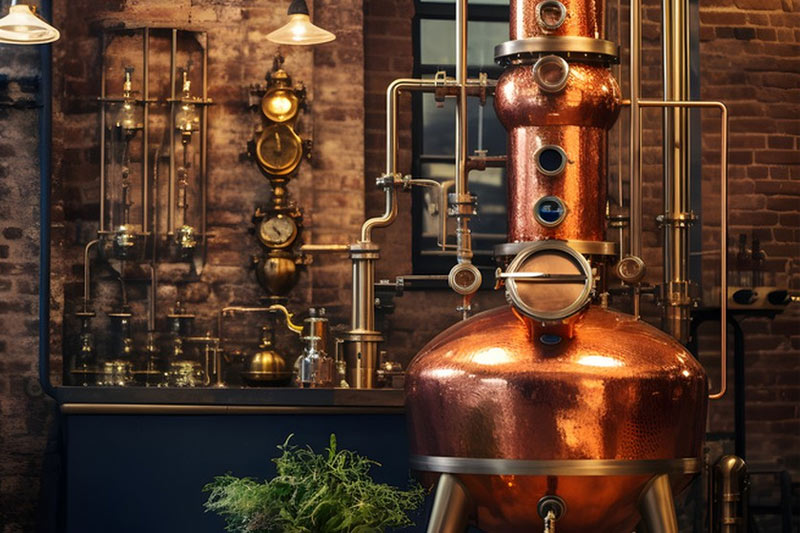As people’s quality of life improves, more and more home users are beginning to pay attention to homemade healthy drinks, such as homemade whiskey, rum, essential oil extraction, water purification, hydrosol production, etc. These applications are inseparable from a key equipment – distillation equipment. This article will comprehensively analyze how to choose distillation equipment suitable for home use, considering aspects such as equipment type, usage requirements, selection recommendations, and safety issues.
What is Home Distillation Equipment?
Home distillation equipment is a device that uses liquid heating to evaporate and then cools it back to pure liquid. It is widely used in brewing, plant essential oil extraction, pure water distillation, and other fields. Home distillation equipment refers to small distillation equipment that is small in size, easy to operate, and suitable for home use.
Basic composition of household distillation equipment
Heating pot: This is the core part of the distillation equipment, which is used to heat the raw liquid to make it reach boiling point and evaporate. The heating methods are usually electric heating or gas heating. The pot body is mostly made of stainless steel, which is resistant to high temperatures and easy to clean. Heating uniformity directly affects the distillation efficiency and the quality of the final product.
- Condensation system: The steam generated by evaporation enters the condensation system through the condensation pipe so that the steam turns back into liquid. It can ensure the purity and taste of the distillate. The condensation efficiency is related to the recovery rate of the finished product.
- Receiving container: The condensed liquid is collected in the receiving container. The container must be made of 304/316 material to ensure that the distillate is not contaminated. The design is usually easy to take out and clean, and it has a leak-proof function to ensure a smooth distillation process.
- Temperature control system: The temperature of the pot body is monitored in real-time through a temperature sensor, and the heating power is automatically adjusted to achieve precise temperature control. Reasonable temperature control not only improves the distillation efficiency, but also prevents safety hazards caused by overheating, and ensures the safety of equipment and operators.
- Safety valve or vent: When the pressure inside the equipment is too high, the safety valve or vent will automatically release excess steam to prevent damage or explosion caused by pressure accumulation. This is an important device to ensure the safe operation of home distillation equipment and must be checked and maintained regularly.
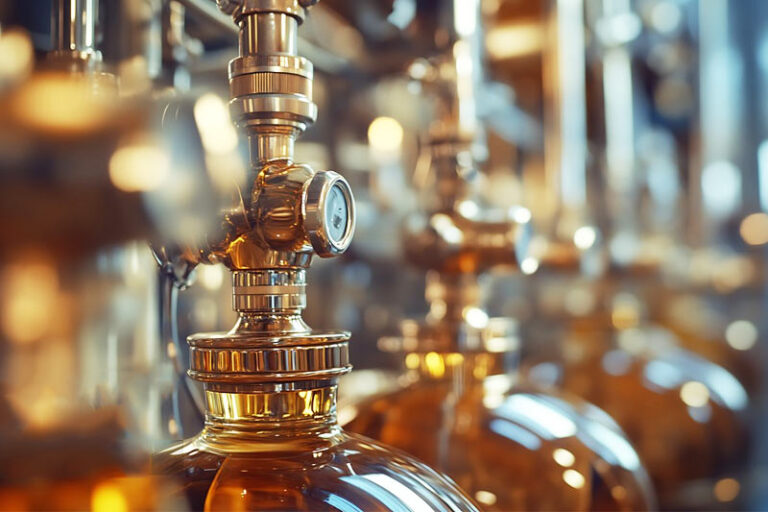
Types of Home Distilling Equipment
Pot Stills
Pot stills are simple and usually consist of a heating vessel, a condenser, and a collection flask. They are inexpensive and intuitive to operate. They are suitable for beginners or users with a limited budget. They are often used to extract essential oils, and distilled water, or try small batches of home brewing.
Column still
Column still equipment is common among wine enthusiasts and has a high purification capacity. The column still is equipped with a reflux pipe and a packing tower, which can effectively improve the purity of steam and is particularly suitable for making high-purity alcohol. The operating efficiency and output quality are better.
Multifunctional distiller
Multifunctional distiller combines multiple functions such as distillation, purification, and condensation. It is easy to operate and flexible. It is widely used in whiskey, gin and other spirits, plant essential oil extraction, Chinese medicine concentration, pure water preparation, etc. It is suitable for home winemaking enthusiasts. They usually have temperature control, automatic slag discharge, and detachable condenser tubes. They can make distilled wine, extract essential oils, or purify water.
Continuous distiller
It is capable of continuous feeding and discharging, achieving an efficient distillation process. Suitable for home users who need high output and higher purity distillation, although the price and operation complexity are relatively high.
Electric Mini Stills
This device is small and usually heated by electric heating elements, making it easy to carry and store. Electric mini stills are suitable for small batch production at home, especially for users who are trying the distillation process for the first time.
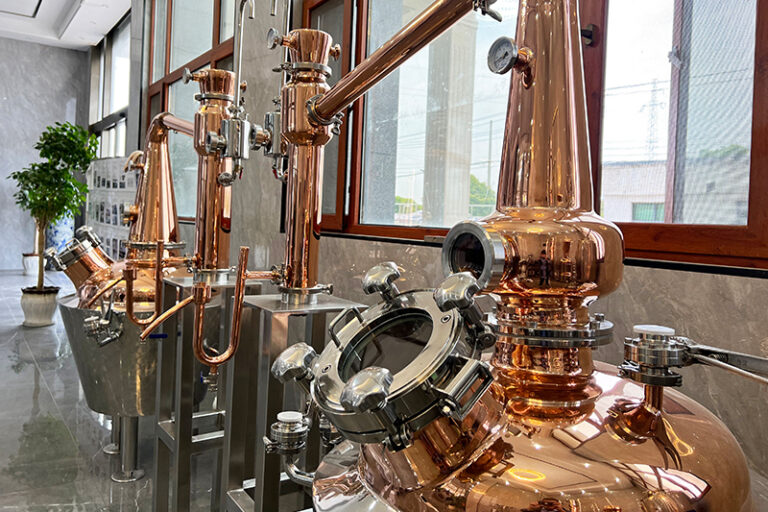
Key points for purchasing household distillation equipment
Purpose of use
- Making essential oils: You need to choose an essential oil distiller with a plant container and a water vapor channel;
- Purifying water: It is suitable to use a steam condensation pure water distiller;
- Homemade wine: It is recommended to choose wine distillation equipment with a temperature control function, preferably with a reflux tower design;
- Medicinal material extraction: Gentle temperature control capability is required, and the capacity should not be too small.
Capacity selection
Capacity range | Applicable objects/scenes | advantage |
2 0L -50L | Small business start-up , small batch distilled liquor, medicinal material extraction, essential oil extraction | Easy to operate, moderate output |
50L – 100L | Small family wine shop, dedicated wine enthusiast | High yield, suitable for families or friends to share |
100L – 200L | Home brewing business, bar, restaurant | Large amount of wine can be produced at one time, suitable for stable supply or sales |
200L and above | Small winery or full-fledged commercial operation | Requires dedicated site, electricity/gas configuration, and operation experience |
Material comparison
Material | Features | Suggested Uses |
Stainless steel 304/316 | Anti-corrosion, high temperature resistance, easy to clean | Recommended for most home use scenarios |
Copper | Fast heat conduction, suitable for distilling alcohol, but requires regular rust removal | High-end home brewing equipment, wine distillation |
Glass | Easy to observe, highly hygienic, but brittle | Suitable for making essential oils or aromatic water |
Condensation system design
The efficiency of the condensation system directly affects the distillation speed and cooling effect. Common condensation forms are:
- Serpentine tube condensation: compact structure, fast cooling speed, suitable for most purposes;
- Straight tube condensation: simple structure, but relatively low cooling efficiency;
- Double-layer condensation system: more thorough cooling, suitable for essential oil extraction and high-purity liquor distillation.
Brand and after-sales service
When purchasing, it is recommended to check user reviews and use cases, and give priority to regular manufacturers with brand official websites, after-sales customer service, and warranty policies. If conditions permit, choose channels with actual stores or domestic warehousing for easy after-sales protection.
Operational convenience and safety protection
- Thermostat: real-time temperature monitoring helps control distillation quality;
- Anti-dry burning protection: effectively prevents equipment damage caused by continued heating after the water dries up;
- Safety valve or pressure relief hole: prevents risks caused by excessive internal pressure;
- Quick-release structure or one-piece molding design: convenient for cleaning and storage.
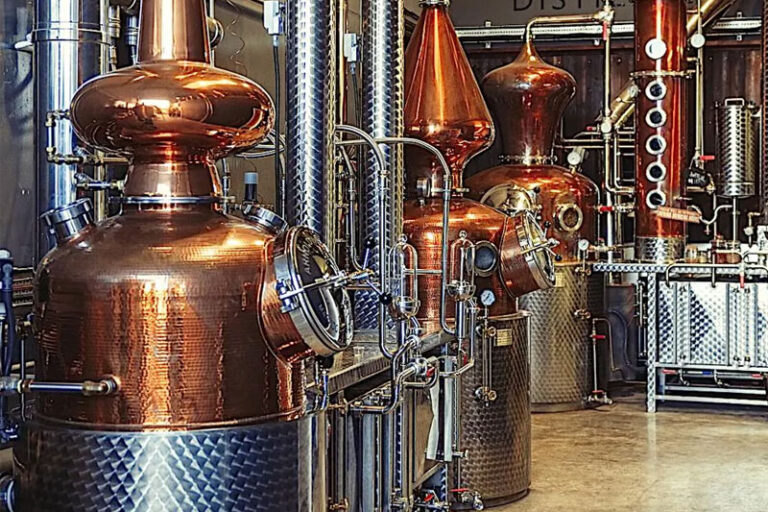
Precautions for the use and maintenance of household distillation equipment
Correct assembly and operation
Before using the distillation equipment, you need to ensure that all parts are firmly installed and well-sealed. In particular, if the connecting pipes and sealing rings are loose or damaged, it is easy to cause steam leakage, affecting the distillation efficiency and even posing a safety hazard. During operation, adjust the temperature and pressure according to the instructions in the manual to avoid overheating or dry burning of the equipment. It is recommended to test run under no-load conditions for the first use, and then conduct formal distillation after confirming that the equipment is working normally.
Monitor temperature and pressure
During the distillation process, it is very important to pay attention to temperature changes in real-time. Different materials have different distillation points, and proper temperature control can ensure the extraction effect and purity. At the same time, the internal pressure of the equipment should not be too high. Modern household equipment is generally equipped with a safety valve or pressure relief port to prevent pressure accumulation and cause danger. Users should be familiar with the temperature control system and safety protection devices of the equipment, and manually adjust or stop heating when necessary.
Regular cleaning and maintenance
After using the equipment, the residual impurities and precipitation will affect the effect of the next distillation, so it must be cleaned in time. The pot body and condenser tube should be cleaned with warm water and neutral detergent, and avoid using strong corrosive chemicals. Copper parts need to be regularly maintained with special cleaning agents to prevent oxidation and discoloration. The sealing rings and pipes should also be kept clean and replaced when necessary to ensure the sealing performance.
Proper storage to prevent aging
When not in use, the equipment should be disassembled and placed in a dry and ventilated environment to prevent metal rust and sealing ring aging. Especially rubber seals, which are prone to hardening or cracking over time, affecting the sealing effect. It is recommended to check the equipment condition regularly to keep the equipment in good condition and ready for use at any time.
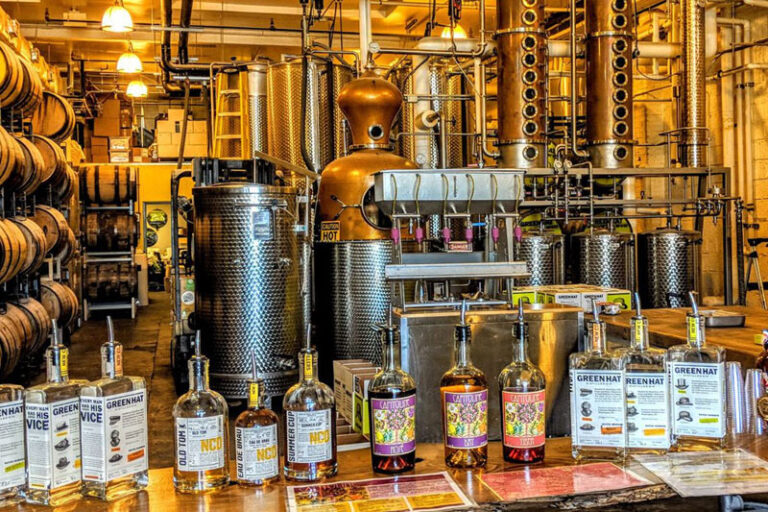
FAQ
What are the heating methods for distillation equipment? Which one is more suitable for home use?
There are mainly two types of heating: electric heating and gas heating. Electric heating is easy to operate and has precise temperature control, which is suitable for home use; gas heating is suitable for outdoor or non-electricity environments.
What is the general price of home distillation equipment?
Depending on the capacity, material, and function, the price generally ranges from $100 to $1,500. It is recommended to choose equipment that is cost-effective and meets your needs according to your budget.
Is it difficult to clean and maintain the distillation equipment?
The distillation equipment is designed to be easy to disassemble and clean. Residues should be cleaned up in time to prevent impurities from affecting the next distillation effect.
How can a novice choose the distillation equipment that suits him?
It is recommended for a novice to choose an electrically heated stainless steel or glass distiller that is easy to operate, highly safe, and has a moderate capacity. The equipment description should be detailed, preferably with a tutorial and after-sales support.

